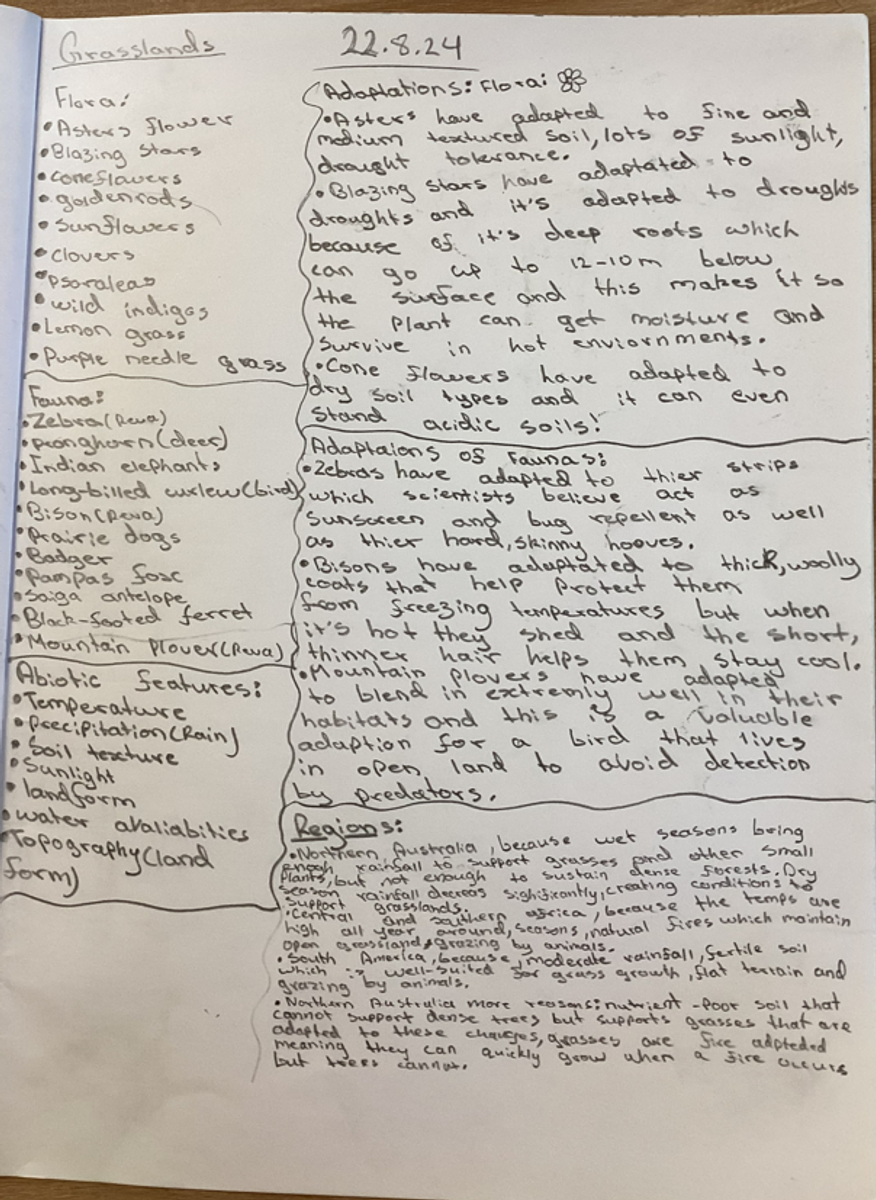Science
Ms Kirk, Ms Nguyen & Ms Kini

Science
Ms Kirk, Ms Nguyen & Ms Kini
It is our last week learning about Biology and we are thrilled by how far students have come. Parents can check their child’s learning progress on the Science Seesaw. We are so proud of our students!
Students continued to learn about the characteristics of living things. Students engaged in videos, pair and whole class sharing, and completed cut and paste activities to display their learning about movement, reproduction and growth (sorting healthy that promotes growth and unhealthy food).
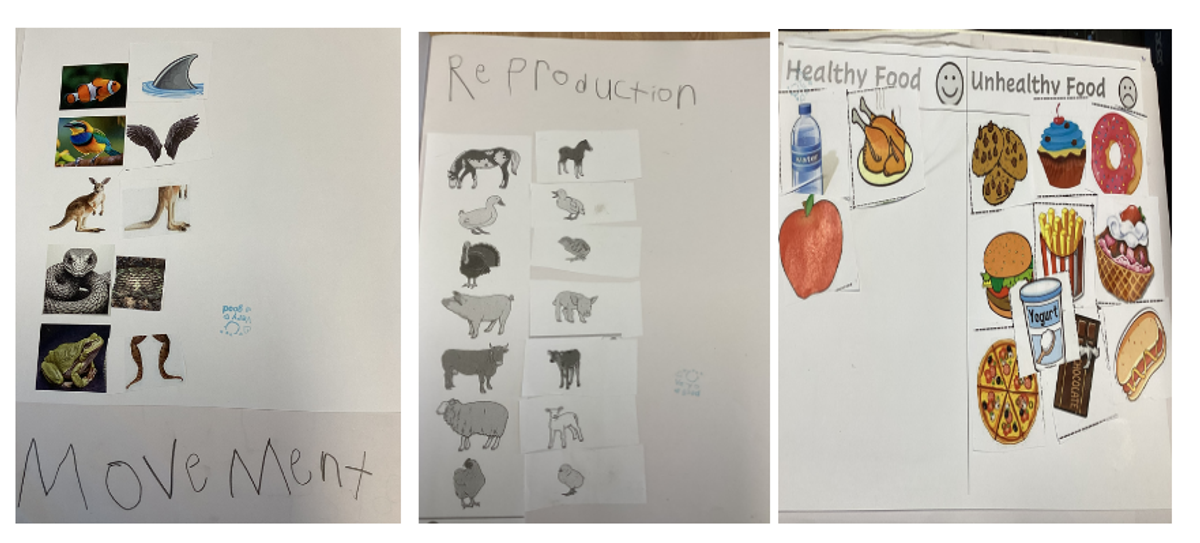

Students discovered the key observable features and needs of an aquatic (fish), aerial (bird) and land (kangaroo) animal. Students engaged in videos, pair and whole class sharing, labelled diagrams and completed cut and paste activities to display their learning.
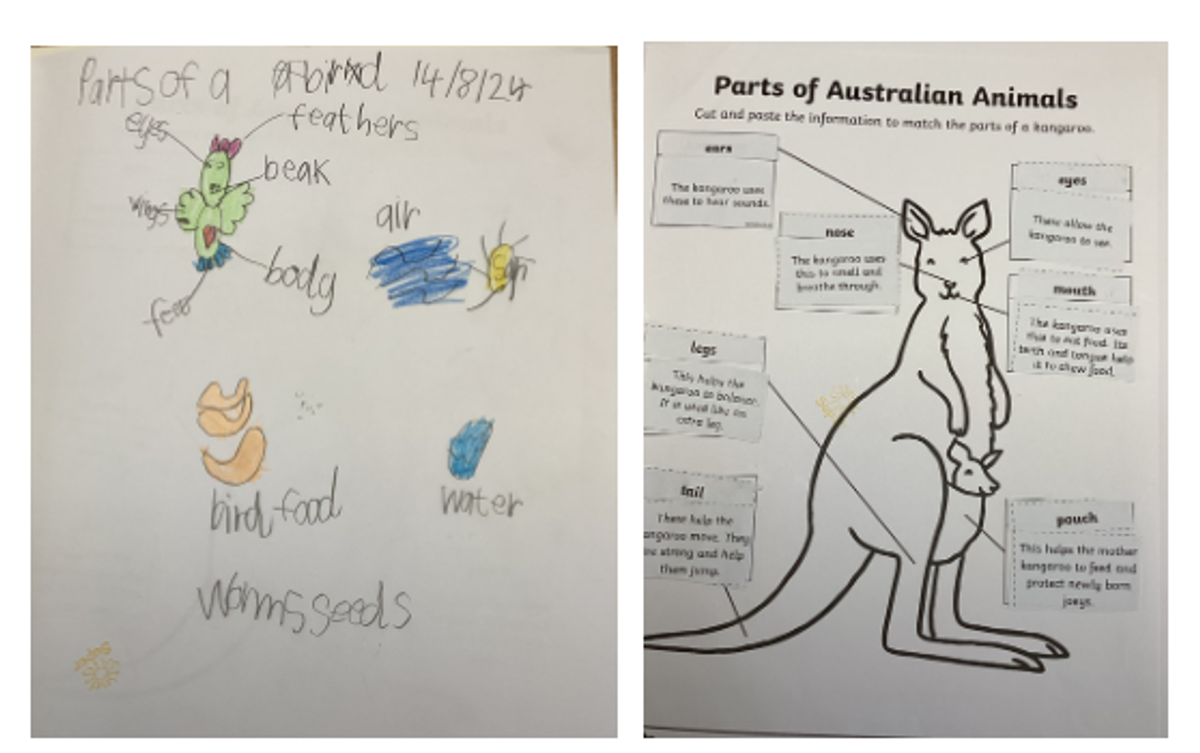

Students built on their knowledge about photosynthesis and reproduction to explore the lifecycle of a eucalyptus tree, kookaburra and kangaroo. Students engaged in videos, pair and whole class sharing, labelled diagrams and completed cut and paste activities to display their learning.
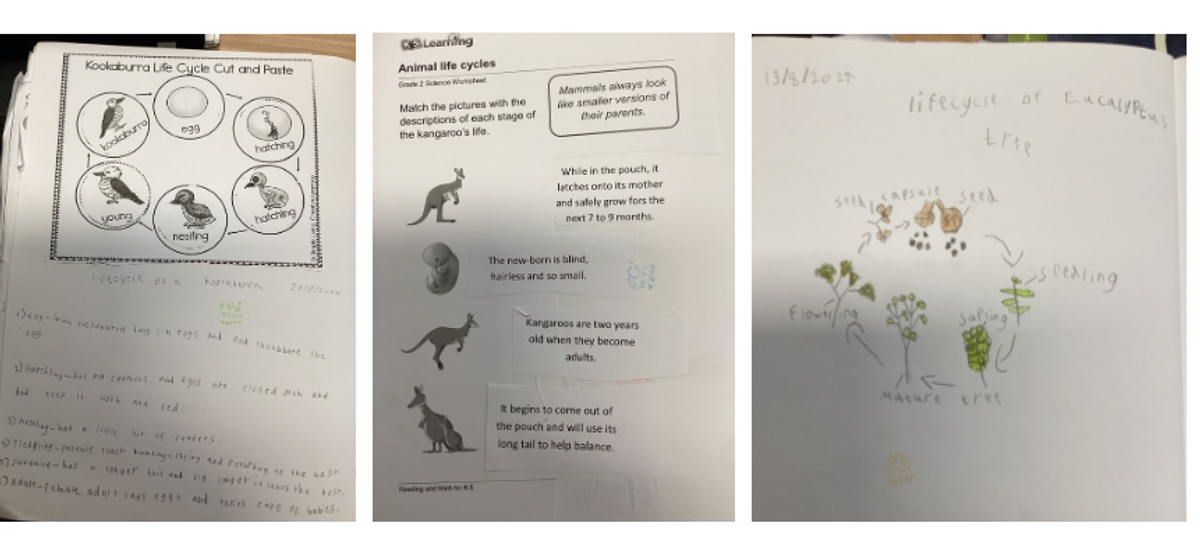

Moving onto animals, students explored the observable features of an aerial (bald eagle), aquatic (great white shark) and land (kangaroo) animal. Students engaged in videos, pair and whole class sharing, research and created labelled diagrams to display their understanding about the purpose of key features specific to the animal.
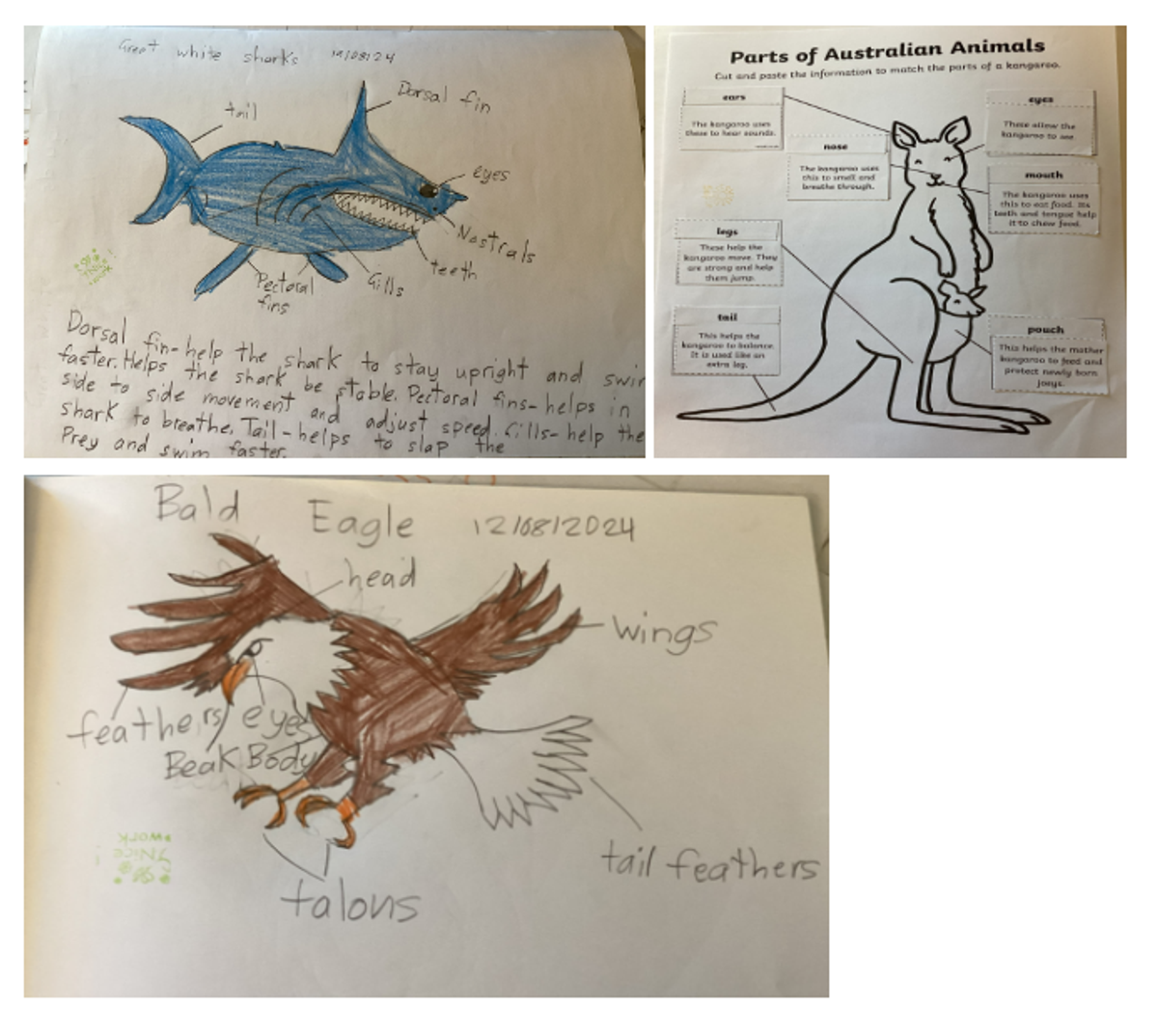

Students linked their knowledge about photosynthesis and pollination to explore the lifecycle of a cassowary, kookaburra and eucalyptus tree. Students engaged in videos, pair and whole class sharing, research and created labelled diagrams to display their understanding. Students were also challenged to conduct their own research to discover facts about their lifecycle. Questions included, ‘why does the female leave after she has laid her eggs?’ and ‘how long does it take for the eucalyptus tree to grow from a seed to a mature tree?’


Moving onto animals, students explored the observable features of an aerial (flying fox), aquatic (great white shark) and land (kangaroo) animal. Students engaged in videos, pair and whole class sharing, research and created labelled diagrams to display their understanding about the purpose of key observable features specific to the animal for their survival.


Students worked collaboratively in pairs or small groups to research, record and present their findings about a biome of choice to their peers. Students referred to a criteria to guide their research. During presentations, students used a rubric on Seesaw to assess their peers.
